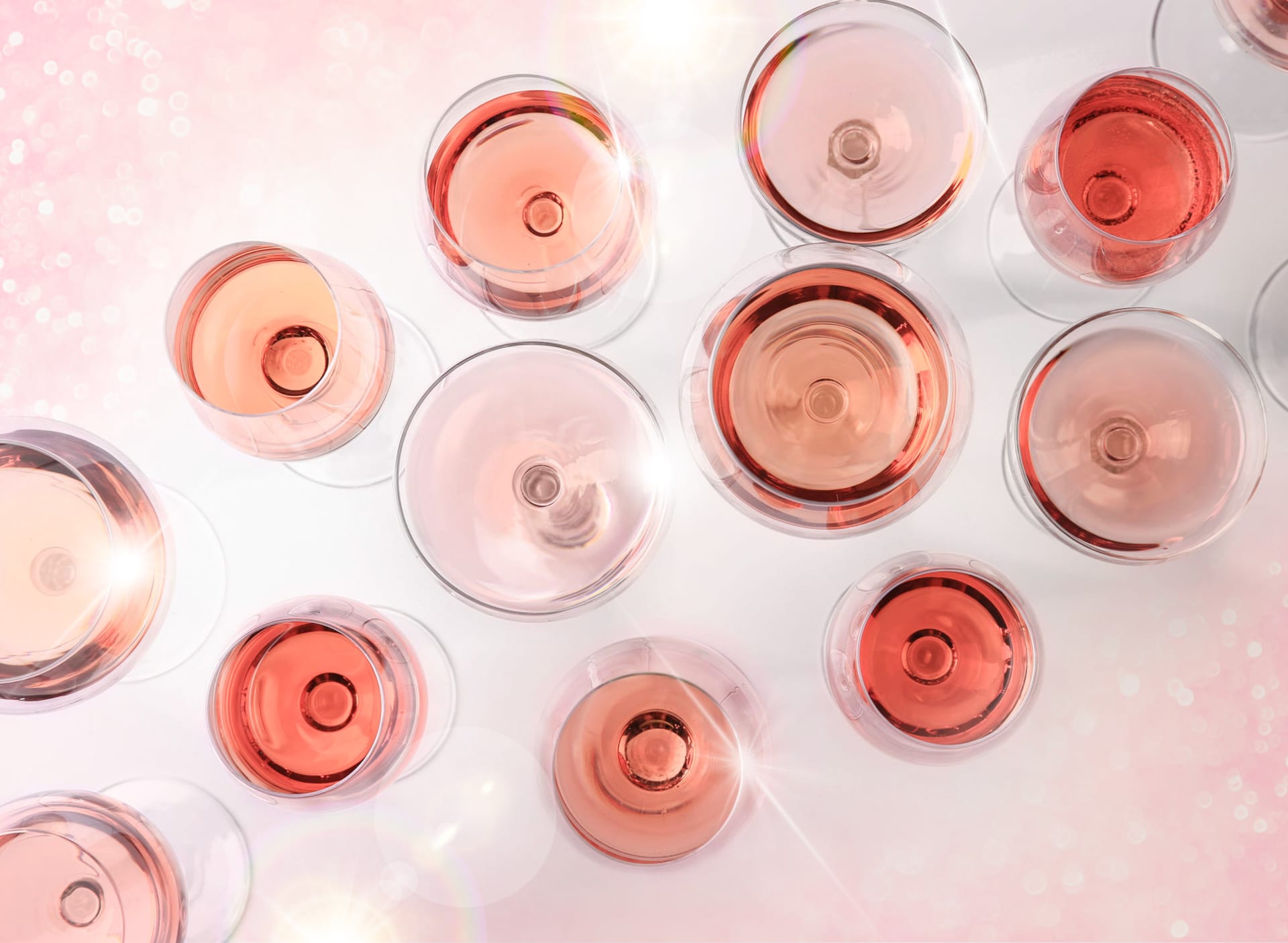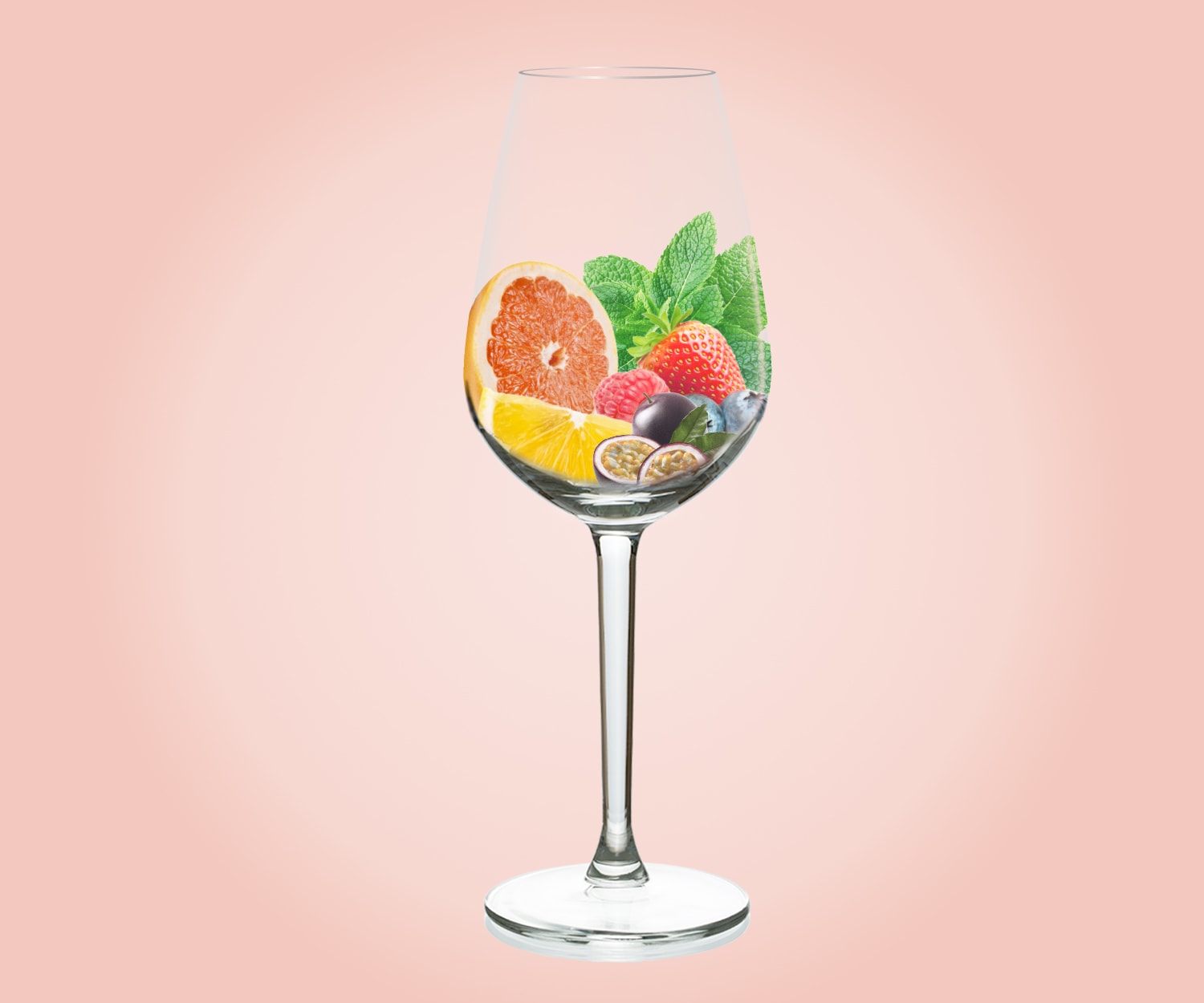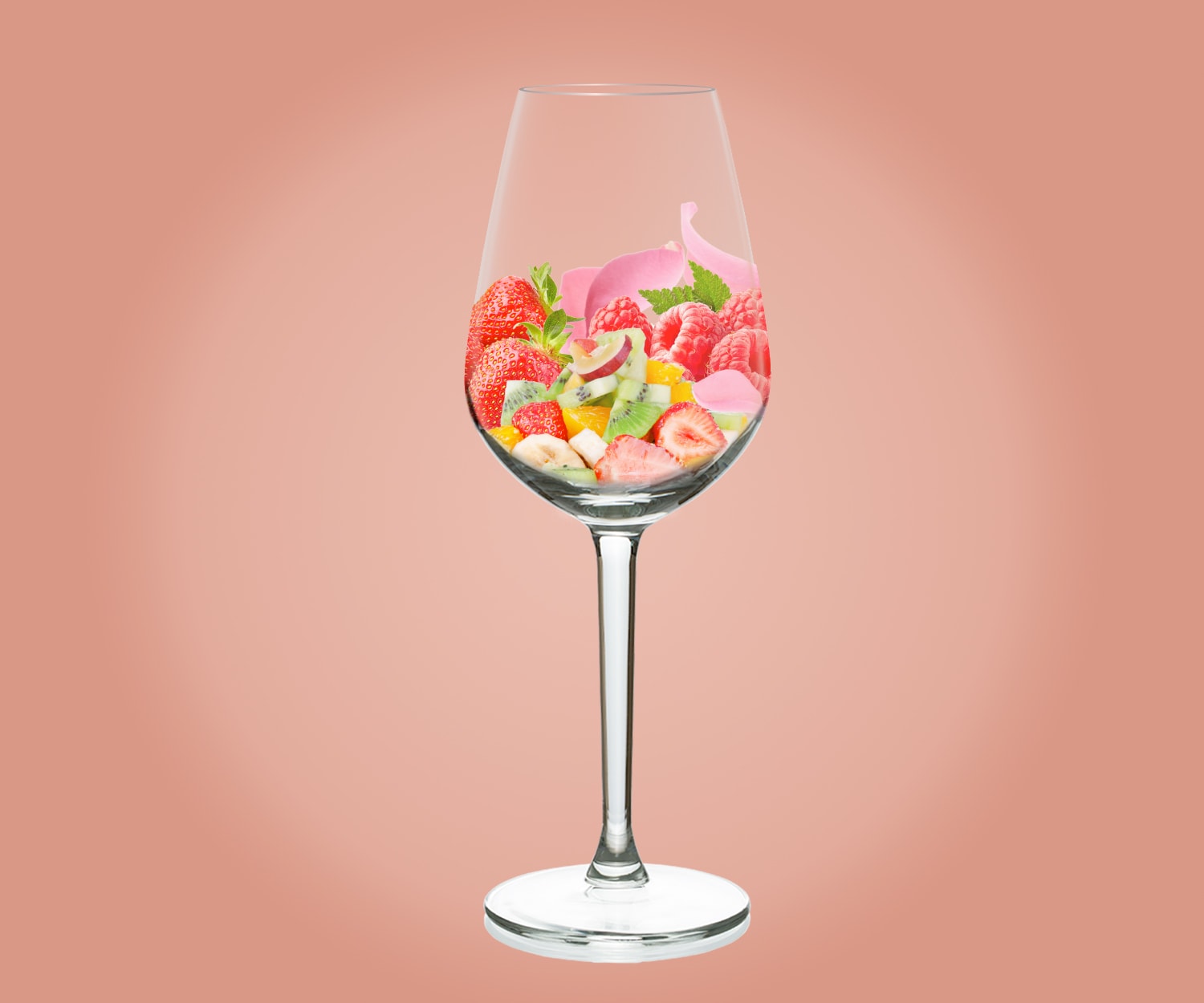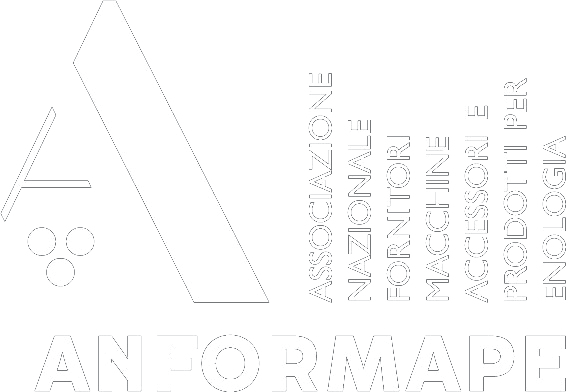ROSÉ WINE, A WORLD WITH A WEALTH OF NUANCES AND SCENTS TO DISCOVER
OUR RANGE OF BIOTECHNOLOGIES, ADJUVANTS AND SOLUTIONS FOR ENHANCING THE PECULIARITIES OF EACH ROSÉ DERIVES FROM CAREFUL STUDY OF THE PRODUCTION PROCESSES
Rosé wine is “wine for that special moment, for sharing, a social wine, without compromise”. Protagonists of convivial occasions, rosé wines have gained an important slice of the market in recent years, representing a genuine oenological trend.
Many producers around the world have begun to create their rosé wine as a wine in its own right, implementing all the necessary operations to propose an increasingly refined and quality-oriented product; so much so as to reach an important production, both in terms of volume and value of the wine produced.
Today the market offers a vast choice of fine rosés with multiple chromatic tones, typical of this category. Overall, they are wines with delicate and appealing aromas, easy to drink, and with a freshness that makes them eclectic companions for aperitifs and many other gastronomic combinations. Thanks to these remarkable organoleptic qualities, they have now conquered the palate of wine lovers throughout the world.
WHAT ARE THE MOST IMPORTANT PARAMETERS FOR A GOOD ROSÉ WINE?
This is because, as the degree of intensity of the pink colour increases, we will have a greater extraction of phenolic substances and aromatic compounds, which will characterise the body and the final aroma.
Already from the early stages of vinification in rosé it is important to check for the presence of phenolic acids. These compounds, in fact, by binding to tartaric acid, form hydroxycinnamic acids, which, interacting with the metabolism of oenological yeasts having a cinnamate-decarboxylase activity (POF +), generate volatile phenols, responsible for unpleasant odours.
Hydroxycinnamic acids, moreover, are among the first substances to be oxidised by free radicals that generate quinones responsible for the inhibition of aromas (due to the binding with thiol compounds) and browning, giving the wine orange or brown hues.
To avoid these problems, it is necessary to carry out, in the early phases, a phenolic cleaning using protein adjuvants such as animal or vegetable gelatins (Ve-Gel, Ve-Gel Liquid). After pressing and maceration, it is important to carry out an optimal clarification to reduce the phenolic content of the must. Another solution for counteracting the risk of olfactory defects is the use of POF negative yeasts, avoiding the formation of foul-smelling vinyl-phenols.
THE PRODUCTION OF ROSÉ WINE: STYLES AND KEY FACTORS
There are various possibilities for processing a rosé wine. To meet every need, we have developed an ad hoc range, designed specifically for the production of high-quality rosés, which fully encompass the characteristics of the terroir, enhancing the peculiarities of the native varieties.
-
PRODUCTION PHASE
Grape harvest
Maceration
Clarification of the must
Alcoholic fermentation
FACTORSVariety, degree of ripeness and health status of the grapes.
Duration, temperature, extraction of juice and precursors.
Temperature, turbidity.
Vinification temperature, yeast strain used.
Quality factors of rosé wine.
-
PRODUCTION PHASE
Grape harvest
Maceration
Clarification of the must
Alcoholic fermentation
FACTORSVariety, degree of ripeness and health status of the grapes.
Duration, temperature, extraction of juice and precursors.
Temperature, turbidity.
Vinification temperature, yeast strain used.
Quality factors of rosé wine.
We have thus identified three main production styles, from which our range for rosé wines was born: rosé with an amylic aroma, thiolic and spicy rosé, and fruity rosé.
We started from the grape harvest by identifying the critical aspects that will influence the final product. In addition to the degree of ripeness of the grapes and the different varieties used, what distinguishes the three classifications mentioned above are their pressing and maceration. In fact, there are important differences, depending on the duration and temperature at which these phases are conducted.
Once the clarification is finished, we move on to the alcoholic fermentation of the must, the most important processing phase, since it will condition all the organoleptic properties such as the body, the taste and the aroma of the finished rosé wine. For proper vinification, it is important to choose the ideal yeast strain for the release of specific aromatic precursors. In addition, it is necessary to assess the nutritional status of the must, given that the deficiency of nitrogenous components and vitamins can lead to the stop of fermentation and the development of olfactory defects. The choice of yeast, combined with the final goal of vinification, will finally modulate the ideal fermentation temperature.
Let’s now discover the secrets and best practices to follow for the production of rosé wines based on the types we have identified.
ROSÉ WITH AMYLIC AROMA
For fermentation, we recommend low temperatures, around 14-16°C, which favour the production of esters such as isoamyl acetate, hexyl acetate, phenylethyl acetate. In this case, we suggest our Fermol Candy and Fermol Cryofruit yeasts, both of which have a high capacity for producing fermentative esters. While for a correct nitrogenous intake, we recommend Fermoplus Integratéur or Fermoplus Rosé, which can be apportioned during the fermentation process.
THIOLIC AND SPICY ROSÉ
In this case, the contact time of the skins with the must is from 2 to 6 hours, depending on the grape variety, and the temperature is maintained between 10 and 14°C to avoid colour extractions that are too strong.
The fermentation of a thiolic and spicy rosé wine is conducted at temperatures similar to vinification in white (16-18°C): during this phase, it is important to release the thiolic precursors and bound terpenes. For this oenological objective, we have thought of yeast strains perfect for enhancing the aromatic precursors through specific liasic and glycosidic activity. Our yeasts for aromatic rosé (Fermol Red Bouquet, Fermol PMD 53, Fermol Tropical, Fermol Lime, Fermol Iper R) are equipped with enzymatic activity that makes it possible to release the odourless precursors trapped in the grapes. As nitrogenous nutrition we recommend the use of Fermoplus Tropical, Fermoplus Sauvignon or Fermoplus Rosé immediately after the start of the alcoholic fermentation, to enhance the varietal notes.
FRUITY ROSÉ
This allows a greater diffusion of polyphenols and gives the wine that is produced characteristics similar to red wines, with aromas that are a little sweeter and less fresh than the other two wines described. The juice before it is removed, generally, remains from 2 to 48 hours on the skins, at a temperature around 16-18°C.
In this phase, it is particularly important to use extraction enzymes, in order to facilitate the extraction of the juice, increasing its yield and making it possible to optimise the release of the aromatic precursors present in the skin. In this regard, in our range dedicated to rosés we provide enzymatic preparations such as Endozym Éclair, Endozym ICE or Endozym Cat-0 which improve yields and can shorten the pressing cycles.
Following the bleeding off of the juice, the juice needs to be clarified to improve its clarity and reduce its content of phenolic compounds: preserving the turbidity on average levels (100-200 NTU) that favour the expression of the aromatic precursors. Here too, the use of enzymes is a valid aid and for this reason, in our range, there are clarification enzymes (for example Endozym Active, Endozym Rapid and Endozym Cat-0) that make it possible to improve the wine’s clarity, reduce the speed of racking and increase the yield in juice.
Rosé wines with a fruity style are vinified at high temperatures (20-25°C) in order to obtain a greater production of aromatic notes reminiscent of berries. To increase this aromatic evolution, we recommend our Fermol PB 2033 and Fermol Red Fruit yeasts, strains particularly suitable for the production of rosé wines, able to ferment in a wide range of temperatures and enhance the floral and fruity aromas, especially those of berries and small red fruits. Our nutrients Fermoplus Spicy Fruit and Fermoplus Rosé are ideal in combination with our active dry yeasts.
HOW TO PRESERVE ROSÉ WINE
Once fermentation is finished, it is essential to protect the wine from any alterations, such as the early reduction of the aromatic character, the reduction of freshness and the onset of brown compounds responsible for yellowing. Our rosé range is specifically designed to defend your rosé wines from these alterations, through the use of products in the extra-fermentative phases.
In order to remove oxidised and/or potentially oxidisable polyphenols from the wine, oenological bentonites such as Majorbenton B, egg albumin-based clarifiers (Clarouge), food gelatins (Gelsol) and vegetable protein preparations (Ve-Gel) are available. We also have a specific proposal to protect the wine from oxidation and to ensure its stabilisation during every phase: the Elevage Glu ageing adjuvant, tannins with antioxidant action such as Gallovin, Protan AC, Gallovit C and complex products with antioxidant function based on ascorbic acid such as Aromax Gal.


 United Kingdom
United Kingdom










